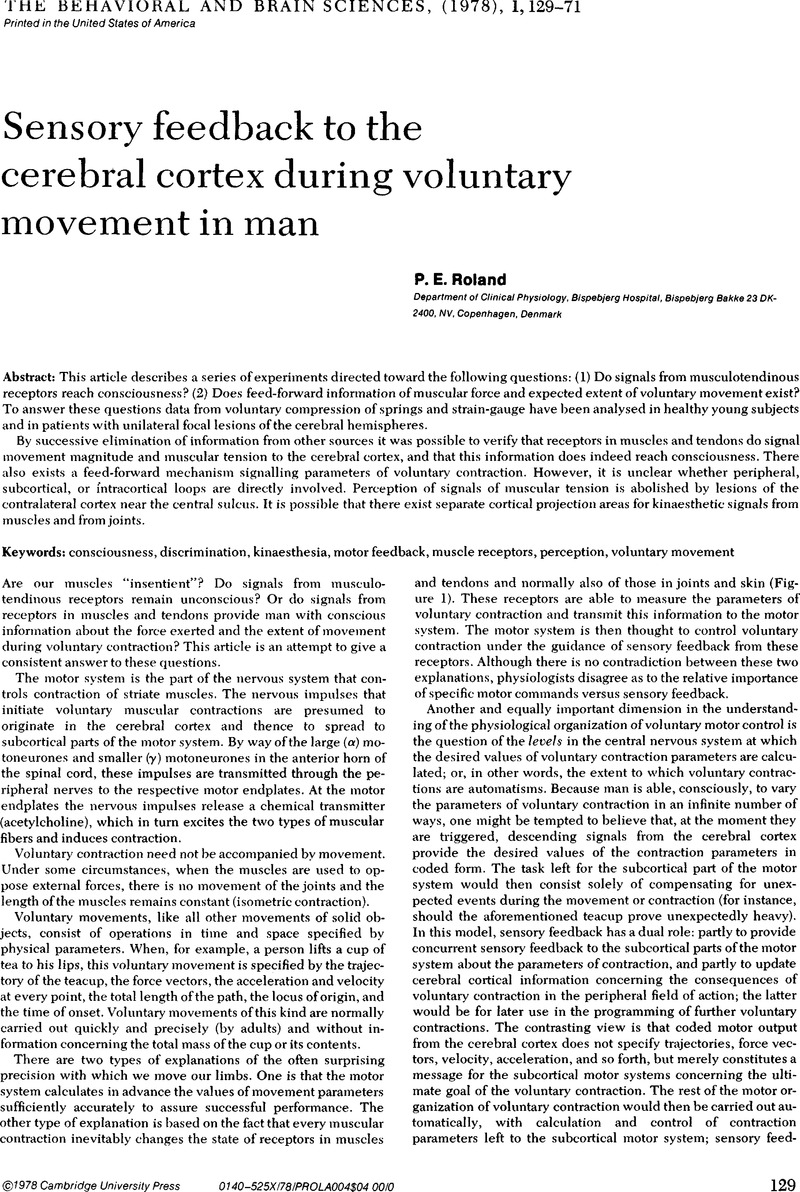No CrossRef data available.
Article contents
The function of sensory feedback
Published online by Cambridge University Press: 04 February 2010
Abstract
An abstract is not available for this content so a preview has been provided. Please use the Get access link above for information on how to access this content.

Information
- Type
- Open Peer Commentary
- Information
- Copyright
- Copyright © Cambridge University Press 1978
References
REFERENCES
Fleischman, E. A. and Rich, S.Role of kinesthetic and spatial visual abilities in perceptual motor learning. Journal of Experimental Psychology, 1963, 66:6–11.CrossRefGoogle Scholar
Lashley, K. S.The accuracy of movement in the absence of excitation from the moving organ. American Journal of Physiology, 1917, 43:169–194.CrossRefGoogle Scholar
Laszlo, J. I.Training of fast tapping with reduction of kinesthetic, tactile, visual and auditory sensations. Quarterly Journal of Experimental Psychology, 1967, 19:344–349.CrossRefGoogle ScholarPubMed
Laszlo, J. I. and Bairstow, P. J.Accuracy of movement, peripheral feedback and efference copy. Journal of Motor Behaviour, 1971, 3:241–252.Google Scholar
Mountcastle, V. B.Modality and topographic properties of single neurons of cat's somatic sensory cortex. Journal of Neurophysiology, 1957, 20:408–434.CrossRefGoogle ScholarPubMed
Smith, J. L. Kinesthesis: a model for movement feedback. In: Brown, R. C. and Coatty, B. J. (Eds.), New Perspectives of Man in Action, Englewood Cliffs, N.J.: Prentice-Hall, 1969.Google Scholar

